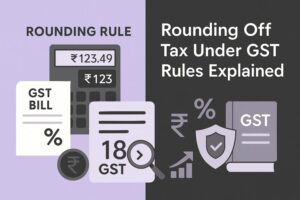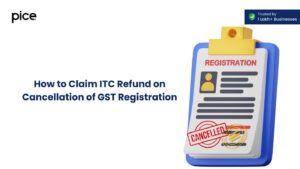Form DRC 01 in GST
- 19 Dec 24
- 8 mins

Form DRC 01 in GST
Key Takeaways
- DRC-01 is issued to notify taxpayers of ITC mismatches and ensure GST compliance.
- Taxpayers must respond to DRC-01 within 7 days using Form DRC-06.
- The form includes details like reference number, tax period, and grounds for discrepancies.
- Non-compliance leads to GSTIN blocking and categorization as a defaulter.
- Valid responses with evidence can prevent disruptions in business operations.
A GST officer is liable to issue form DRC-01 in GST to taxpayers in case he/she detects discrepancies in the claimed and availed Input Tax Credit (ITC). The purpose of issuing this form is to avoid revenue losses for the Indian government and ensure tax compliance for GSTIN holders.
Learn in detail about this form and what you should reply to as a taxpayer if you receive it.
What Is Form DRC-01 in GST?
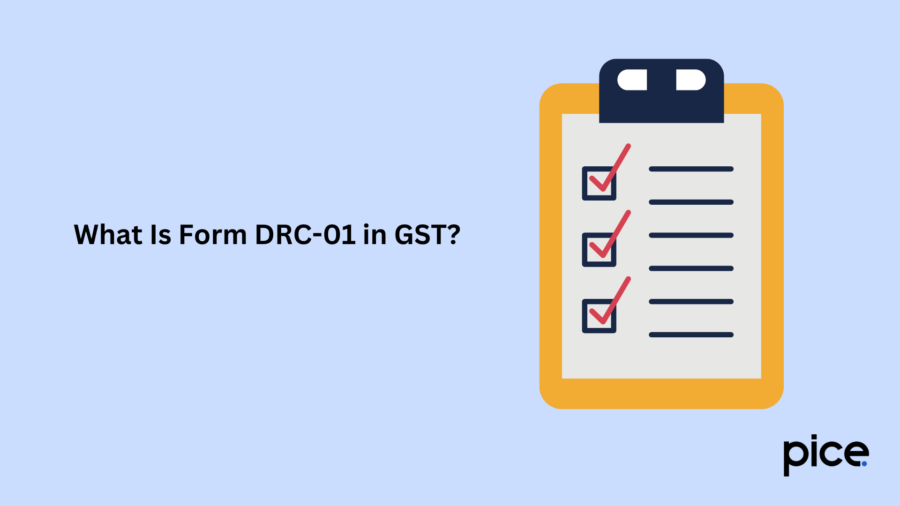
A competent tax officer issues a show cause notice to taxpayers when there is a mismatch in the claimed and available Input Tax Credit (ITC) value for a specific GSTIN. This show-cause notice is termed a Demand and Recovery Certificate (DRC-01). For seamless tracking, each DRC-01 contains a unique reference number.
Taxpayers need to respond to DRC-01 within 30 days with Form DRC-06. A taxpayer neither needs to remit the liability by accepting the discrepancies or contest the mismatches.
Why Is Form DRC-01 Filed?
Form DRC-01 needs to be filed for the following reasons:
● It elaborates on the reason why a tax officer demands additional tax from a taxpayer.
● Form DRC-01 highlights the mismatches between claimed and availed ITC by a taxpayer.
● It helps the GST officer convey the discrepancies to a GSTIN holder.
● The government can reduce tax revenue loss by collecting the accurate amount from taxpayers.
What Is the Applicability of Form DRC-01?
Here are the cases where the DRC-01 form applies:
● Regular taxpayers
● GSTIN holders who have voluntarily opted out of the GST composition scheme
● Casual Taxpayers
● e-Commerce operators
Notably, form DRC-01 does not apply to composition taxable GSTIN holders.
What Are the Components of Form DRC-01?
Under Section 73 or 74 of the Central Goods and Services Tax (CGST) Act, a GST officer issues a statutory notice (also called a statutory form) or DRC-01. The following are the inclusions of Form DRC-01 or the demand notice:
- Reference Number: A GST DCR-01 form contains a unique identifier for the show cause notice (SCN). It helps in tracking the GST notice in the future.
- Receiver Details: This section in Form DCR-01 contains the taxpayer’s GSTIN, name and address.
- Tax Period: The authorised office needs to mention the months and financial year for which he/she found discrepancies or mismatches in this section.
- Relevant GST Law Section and Subsection: This section of the notice for discrepancies highlights the sections and subsections of GST law for the show cause notice.
- Summary: In this section of Form DCR-01 the tax dues claimed, grounds for claiming such dues and the Indian state of the transaction are mentioned.
Who Should File DRC-01?
Unlike other GST filings that taxpayers have to file, a GST officer is responsible for filing Form DRC-01. It is a declarative document that the tax authorities issue to taxpayers (GSTIN holders) for non-compliance associated with the GSTIN.
A GST officer issues this form after audits, scrutiny, and inspection to convey to taxpayers about unpaid taxes and GST law contraventions. It includes the tax amount due, penalties, and applicable interest.
DRC-01 form is an official communication initiated by a tax official to taxpayers to pay outstanding liabilities or reply with valid reasons. It helps the tax authorities recover accurate tax revenue from taxpayers to avoid loss of revenue for the government.
When Is Filing Form DRC-01 Required?
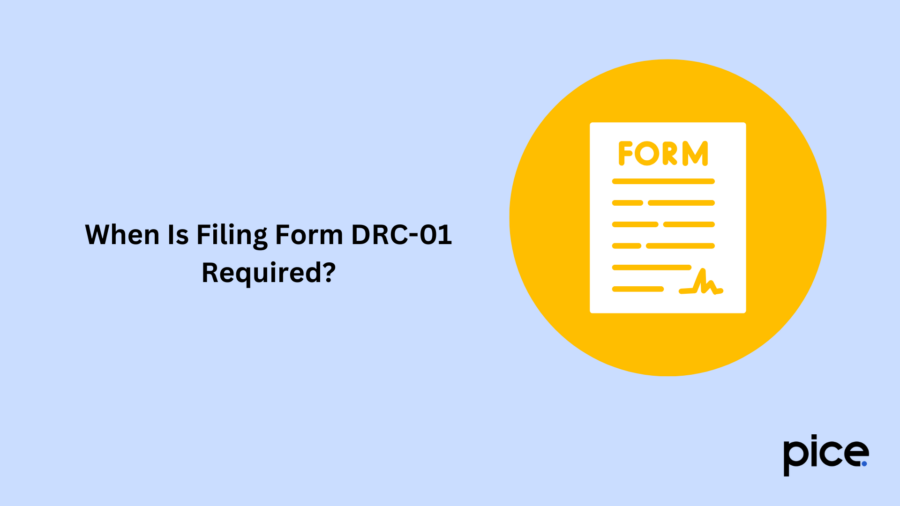
A GST officer can charge the excess ITC paid along with the interest paid from a taxpayer under Sections 73(5) and 74(5) of the GST Act. In case of a mismatch in the ITC claimed and ITC availed by a taxpayer, a GST officer declares the GSTIN holder as a GST defaulter.
Further, the GST officer can declare a taxpayer as a GST defaulter in case of underpayment of taxes. Thereunder, the GST officer can impose a penalty on the taxpayer for underpayment or fraudulent claims. Thus, in the scenarios mentioned above, an authorised officer needs to file form DCR-01.
How to File DRC-01 Form?
A DCR-01 form can be system-generated. Alternatively, a GST officer can file DCR-01 using the GST portal manually. Here are the steps to file DCR-01:
Step 1: As a competent GST officer, you need to log in to the GST portal using your credentials.
Step 2: Go to the ‘Services’ tab.
Step 3: Navigate to the ‘Returns’ tab and choose ‘Return Compliance’. This section provides the options to choose forms DCR-01A, DCR-01B and DCR-01C.
What Is the Reply Format of DRC-01?
Following the issuance of form DCR-01, the GST officer allows taxpayers to provide valid reasons for underpayment or excess ITC claims. However, as a taxpayer, if you do not pay the additional amount within 30 days of receiving the SCN, you need to send your response in form DRC-06. Ensure you provide substantial evidence if you defy the allegations.
You need to follow the steps mentioned below to reply to Form DRC-01 with Form DRC-06:
Step 1: Click ‘Reply’ on the page displaying the aforesaid notice details.
Step 2: Select ‘Add Reply’ and then choose ‘Reply’ from the dropdown menu.
Step 3: Draft your reply providing valid reasons. Ensure you attach supporting documents as evidence. Notably, you can attach a maximum of 4 documents.
Step 4: Check your reply and click the ‘File’ button.
The 'Submit Application' window will open and ask for a DSC (digital signature certificate) or EVC (electronic verification code).
Step 5: If you use a DSC, browse and upload the certificate. In case you use EVC, enter the OTP to validate and complete the process.
Step 6: The proper officer will arrange an in-person meeting wherein you have to appear to authenticate your documents.
Step 7: On completion of the physical hearing, you can track the order section on the official GST portal to check the final decision of the concerned tax officer.
What Is the Time Limit for Filing Form DRC-01?
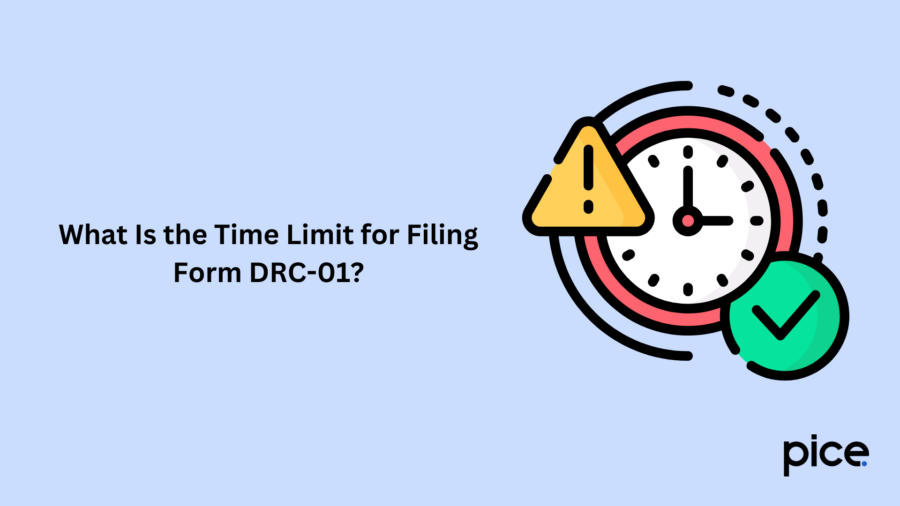
In case of discrepancies and issuance of form DCR-01 by the authorised GST officer, as a taxpayer, you can pay the demanded tax or dues as mentioned in the form. Alternatively, you can reply to Form DCR-01 using Form DCR-06 within 7 days of receiving the precise notice of tax discrepancies. However, if you fail to respond to the SCN in the GST DRC-01 form, your GSTR-1 access will be blocked automatically.
A GST officer issues GST DRC-01 notice for tax discrepancies to a GSTIN holder in case of incorrect refunds, erroneous refunds or non-payment of taxes. As a result, if you fail to respond or pay the outstanding amount, the tax officer will categorise you as a defaulter. To avoid this, you need to respond to the DRC-01 GST notice within the time limit.
Conclusion
If you receive DRC-01 in GST as a taxpayer, ensure to either reply to it within the specific time limit or pay the outstanding tax. This will help you avoid blocking your GSTIN and ensure smooth business furtherance.
If you reply to Form DRC-01, ensure you provide valid reasons and attach, at the maximum, 4 relevant documents supporting your claims. Based on the decision of the proper officer, you can continue your business activities with the same GSTIN.
💡If you want to streamline your payment and make GST payments, consider using the PICE App. Explore the PICE App today and take your business to new heights.
 By
By 











